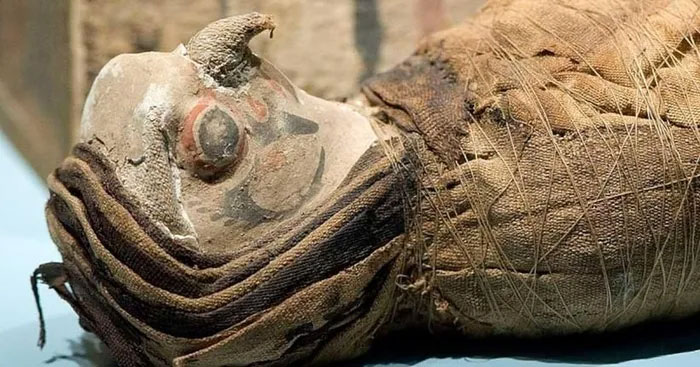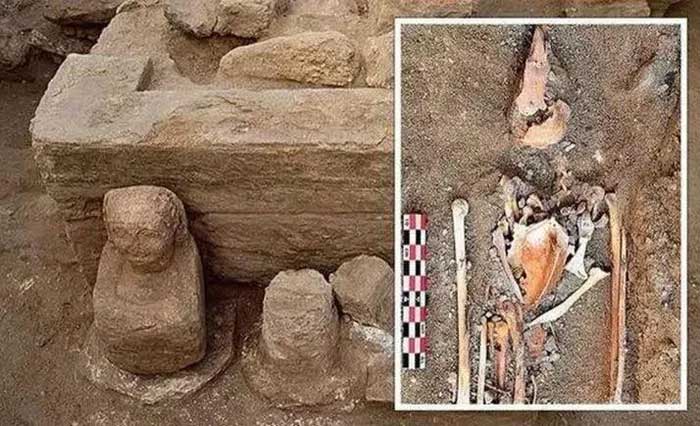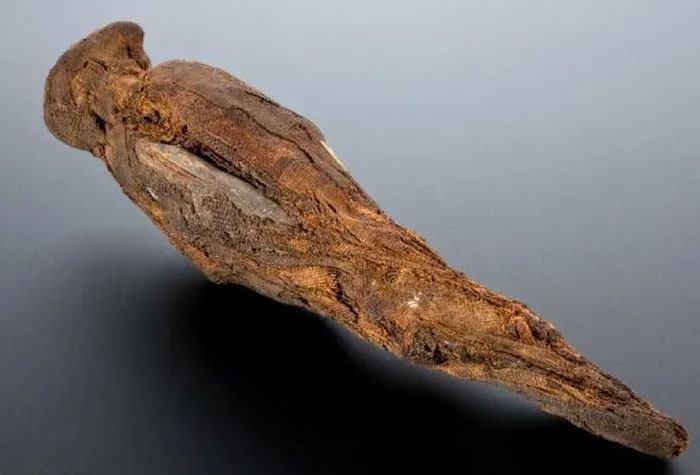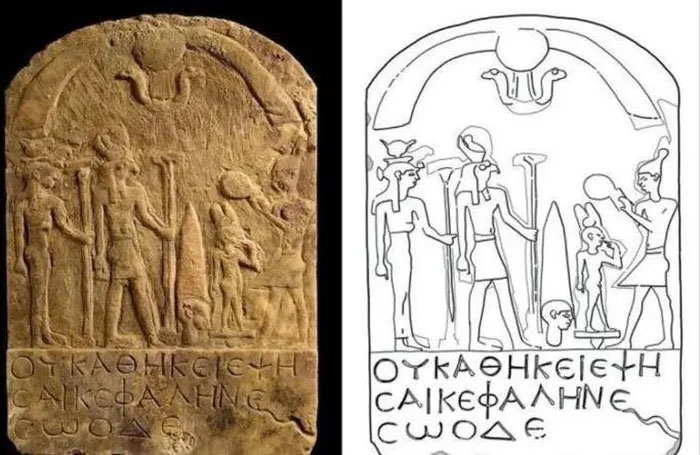During the excavation of an ancient Egyptian temple in the city of Berenike, archaeologists discovered 15 headless mummified hawks.

Mummified hawk found in Egypt. (Photo: Creative Commons).
A team of Spanish and Polish archaeologists announced their findings as part of the Sikait archaeological project in Berenike, published in the American Journal of Archaeology.
The report provides details about the newly excavated ancient Egyptian temple, dating back to the 4th to 6th centuries. The experts found 15 mummified hawks buried around a pedestal, most of which were headless. Therefore, they named the temple “Hawk Temple.”
“Hawk Temple” is located in the Northern Complex, one of the most significant buildings of the ancient city of Berenike. Berenike was an ancient port that had long been abandoned on the shores of the Red Sea, adjacent to the eastern desert of Egypt.

The experts found 15 headless mummified hawks buried around a pedestal.
Christianity became the officially recognized religion throughout the Roman Empire, including Egypt. However, the “Hawk Temple” was built by the Blemmyes, a nomadic people who established their own kingdom in Lower Nubia (southern Egypt and Sudan) at the end of the 4th century.
Demonstrating their independence, the Blemmyes remained loyal to ancient religious traditions and preserved their metaphysical belief system, contrasting with Roman beliefs after the 4th century.
The discovery of their temple in Berenike indicates that the Blemmyes had a strong enough presence in Roman territory to worship any religion they desired, despite any prohibitions that might have been issued from the distant Roman capital.
Previous discoveries in the Nile Valley, Egypt, have shown that hawks were worshipped in ancient times. However, this is the first time archaeologists have discovered a group of mummified hawks buried together inside a temple.

Example of a mummified hawk. (Photo: Ancient Origins).
Along with the 15 mummified hawks, the archaeologists also unearthed a collection of unbroken hawk eggs. This discovery is truly unprecedented.
Experts believe this reveals an unknown ritual of the nomadic Blemmyes. This ritual may have been related to the worship of Khonsu (the Egyptian moon god), who is often depicted with a hawk’s head and a human body.
One notable discovery among the temple artifacts was a stele inscribed with the phrase “Boiling heads here is wrong.” This message refers to the boiling of the heads of animals found in the temple, an act considered a crime.

The stele found among the temple artifacts. (Photo: Ancient Origins).
Professor Joan Oller Guzmán, head of the Sikait project, stated: “All these elements indicate tense ritual activities that combine Egyptian traditions with contributions from the Blemmyes.
These rituals were maintained by a theological framework that may relate to the worship of Khonsu (the Egyptian moon god). These discoveries expand our knowledge of the Blemmyes, nomadic traders who lived in the eastern desert during the decline of the Roman Empire.”


















































